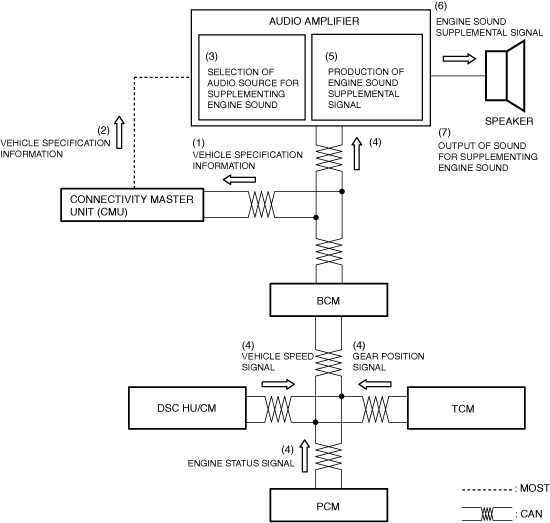1. The body control module (BCM) sends (1) the vehicle specification information to the connectivity master unit (CMU) via CAN communication.
2. The connectivity master unit (CMU) sends (2) the received vehicle specification information to the audio amplifier via MOST communication.
3. When the audio amplifier receives the vehicle specification information, it selects (3) the audio source used for supplementing the engine sound.
4. When the audio amplifier receives (4) the following signals via CAN communication from the PCM, DSC HU/CM, and the TCM with the ignition switched ON (engine on), it analyzes the engine load conditions, calculates the range of insufficient engine sound, and produces (5) an engine sound supplemental signal.
PCM
-
― Engine status signal
DSC HU/CM
-
― Vehicle speed signal
TCM
-
― Gear position signal
5. The audio amplifier sends (6) the produced engine sound supplemental signal to the speaker.
6. The speaker outputs (7) sound for supplementing the engine sound based on the engine sound supplemental signal received from the audio amplifier.

